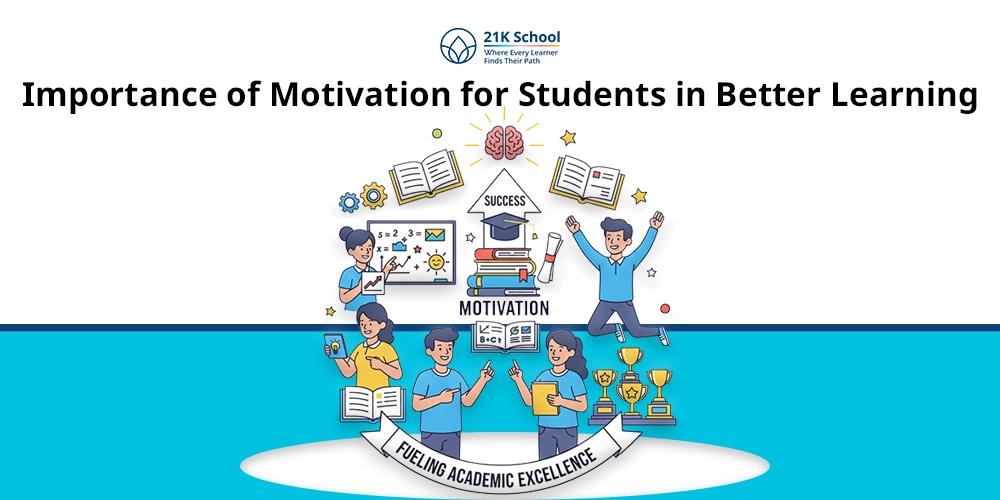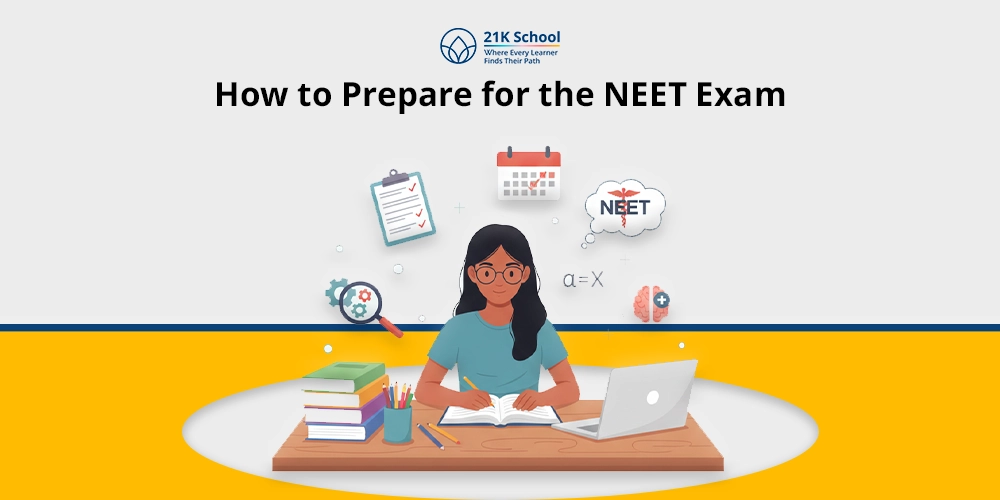
Homeschooling is a method of education in which kids are educated by their parents at home, not at school. It gives families more freedom, allows students to base learning on their interests and helps them meet unique educational needs.
In India, more and more parents are choosing homeschooling curriculum as an alternate way of education for their children.
We have covered the way homeschooling operates in India, its fees, legal position, programs, teaching methods and admission steps. Go ahead with this beginner’s guide to homeschooling.
Table of Contents
- What Does Homeschooling Mean?
- How Does Homeschooling Function?
- What Are the Costs of Homeschooling?
- What Is the Cost of Homeschooling in India?
- Is Homeschooling Accepted by Indian Law?
- Homeschooling Programs
- How to Pick a Homeschool Program?
- Homeschooling Methods
- How to Enroll in Homeschool?
- Online Homeschooling Options in India
- Online Homeschooling Opportunities Worldwide
- Advantages of Homeschooling
- Disadvantages of Homeschooling
- How to Train your Homeschooled Child?
- How to Homeschool Your Kid?
- In Conclusion
What Does Homeschooling Mean?
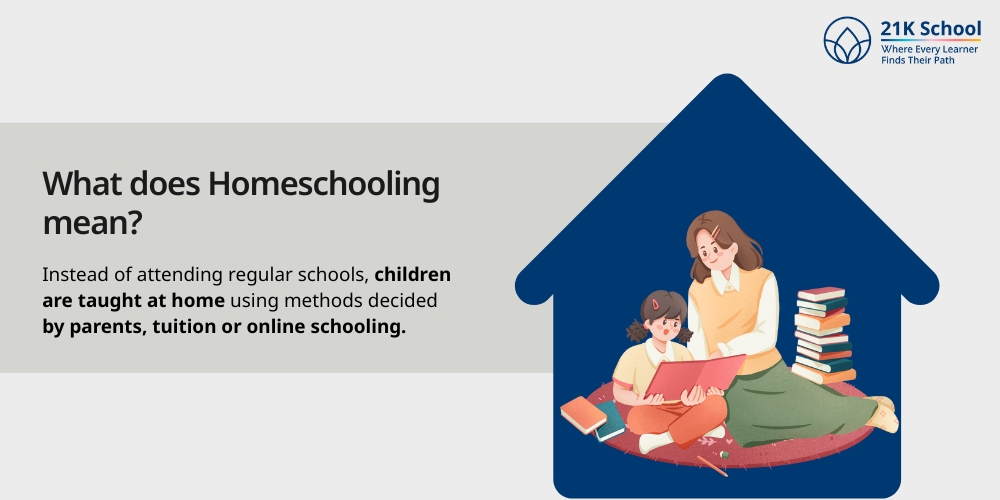
Instead of attending regular schools, children are taught at home using methods decided by parents, tuition or online schooling. Since homeschooling is self-directed, it is able to meet and respect every child’s different speed of learning, approach and preferences.
Homeschooling goes by many different plans in each family. Parents may choose a set schedule and use textbooks or they could pick experiential or topic-based learning for their children.
The aim still is to provide a complete, high-caliber education in an environment that is understanding, adaptable and less stressful.
In recent years, more families in urban areas have turned to homeschooling in India. Digital nomads and those with alternative or unsatisfied education needs have also joined the queue.
Ultimately, homeschoolers want their children to have important life skills, healthy emotional growth, creativity and a strong mind.
These are the top basic life skills not taught in schools.
How Does Homeschooling Function?

Parents or guardians take on the role of school in homeschooling. It involves more than just giving lessons.
Parents should prepare tasks, check how things are going, adapt their methods and ensure their home helps in learning. This is a summary of what usually takes place:
1. Curriculum Selection
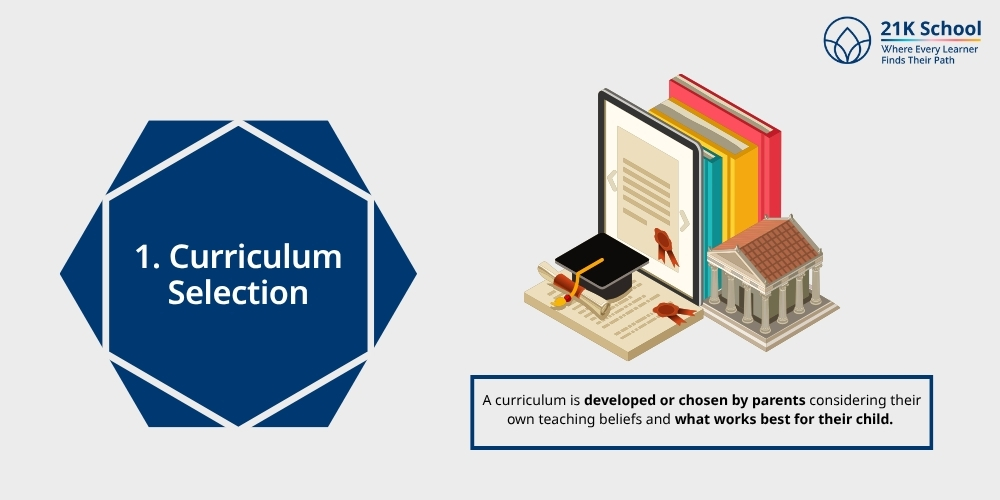
A curriculum is developed or chosen by parents considering their own teaching beliefs and what works best for their child. It could come from Indian boards like NIOS, global boards such as IGCSE or a made-to-fit mix from various sources.
2. Scheduling and Following a Routine
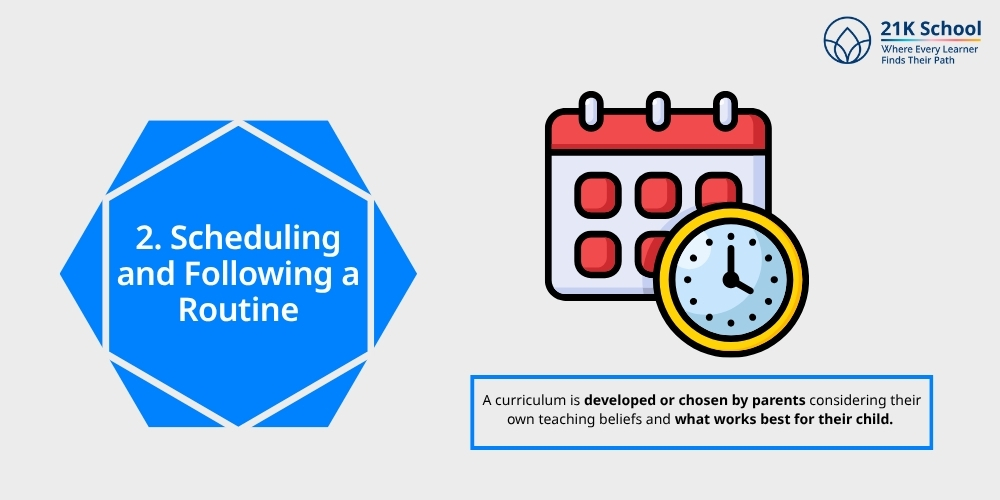
Since traditional school has a set schedule, homeschoolers instead have the chance to form routines that work for them. A child may look at science in the morning, try sports or art in the afternoon and read at night.
Being able to choose their lessons helps children learn better when they want to.
3. Teaching Methods
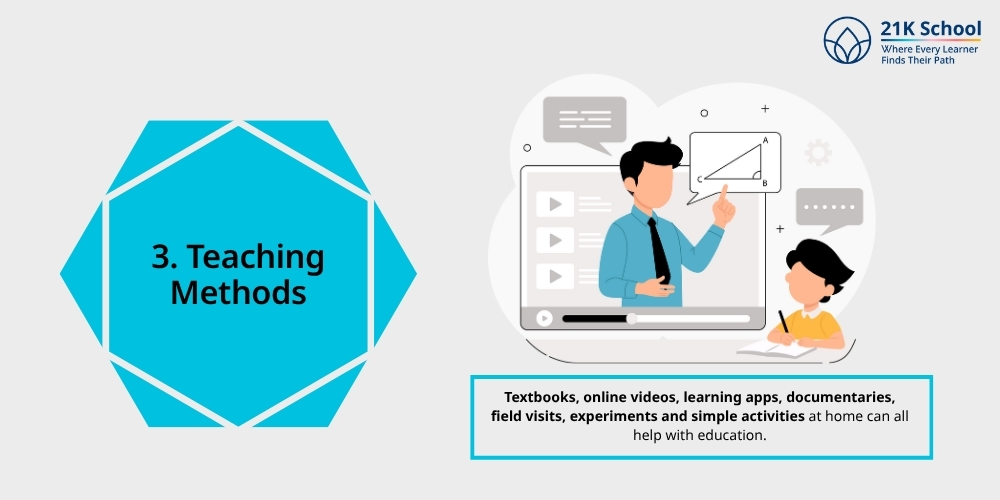
Textbooks, online videos, learning apps, documentaries, field visits, experiments and simple activities at home can all help with education. Guiding students is the main role of parents or tutors, not giving traditional lectures.
4. Assessment and Monitoring Progress
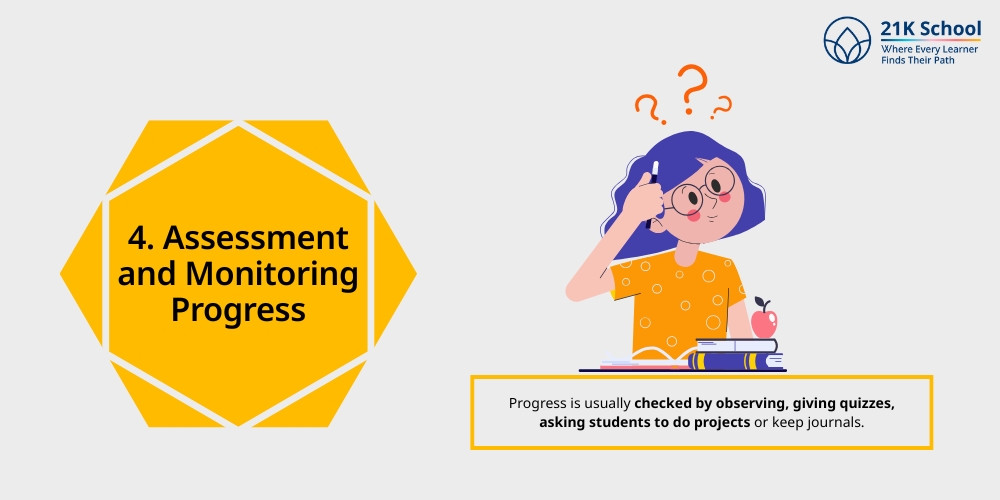
Progress is usually checked by observing, giving quizzes, asking students to do projects or keep journals. Any student aiming for formal approval can apply for board tests from NIOS (India) or Cambridge International.
5. Participation in Social Events

Homeschooled children may not see other students each day. Yet they take part in co-ops, hobby classes, sports and community activities to foster teamwork.
Basically, homeschooling works well when it is both flexible and has clear goals. So that the child’s learning journey can be well planned and changed as appropriate.
What Are the Costs of Homeschooling?
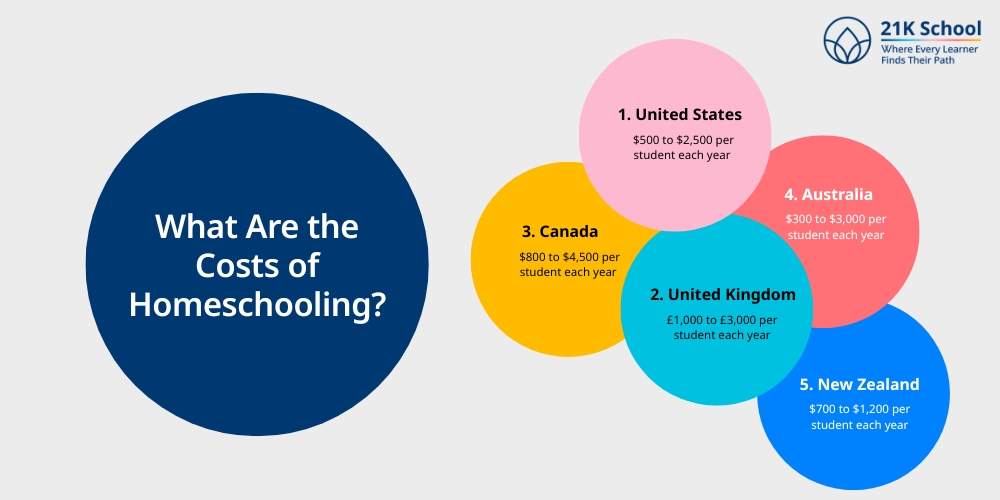
The upcoming section consists of all the cost cutting of top 5 countries offering homeschooling.
1. United States

Homeschooling expenses in the U.S. are affected by the choices parents make for subjects, additional activities and hiring tutors. On average:
- Homeschooling alone: $500 to $2,500 per student each year
- Online homeschooling programs may cost $400 to more than $6,000 annually per child.
- Homeschooling cost with tutoring: $700 to $7,000
- Private tutoring can cost between $35,000 and $70,000.
Refer: https://trustedcare.com/costs/homeschool-cost
These are parts of your budget like instructional materials, books, supplies, fees for trips outside the classroom and extracurricular activities.
2. United Kingdom
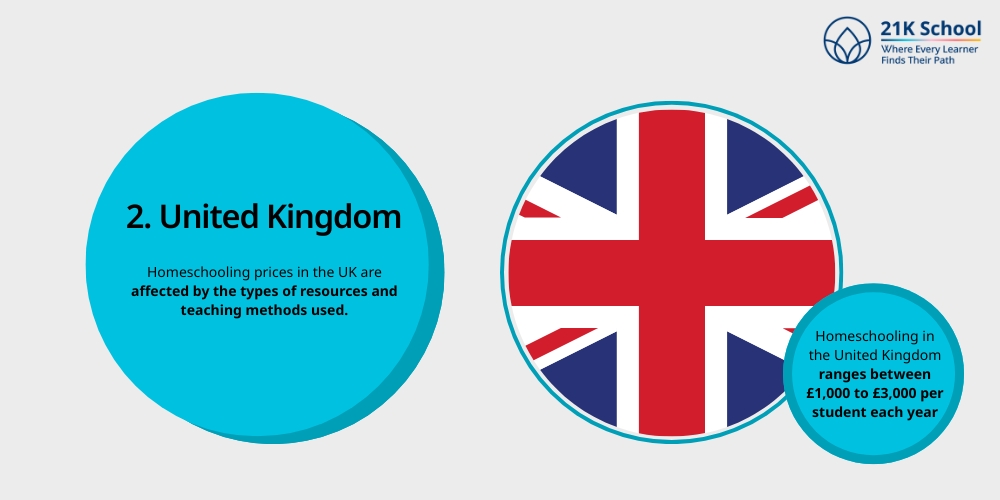
Homeschooling prices in the UK are affected by the types of resources and teaching methods used:
- Expect to pay £10 to £30 per educational textbook.
- Services offered online charge anywhere from £10 to £400 each month.
- It will cost £50–£100 each year for stationery and art supplies.
- Laptops or tablets will cost between £200 and £500.
- About £30–£50 is needed each month for Internet access.
- Exam charge for GCSE: £43.91; charge for A-Level: £105.12
- Sports: £5–£15 per session, music: £20–£40 per lesson, field trips: £10–£100
- Tutoring costs from £1,000 to £3,000 a year.
Many families try to save money by taking advantage of what their community and free online resources offer.
Refer: https://www.studygs.net/how-much-does-homeschooling-cost/
3. Canada
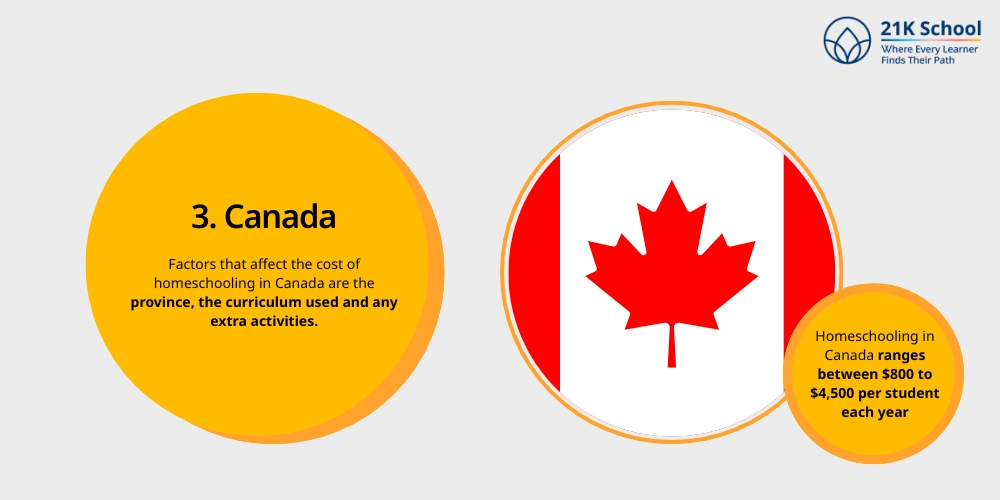
Factors that affect the cost of homeschooling in Canada are the province, the curriculum used and any extra activities.
- Curriculum and materials come at a price of $200–$1,000 each year.
- Programs delivered online – $500 to $3,000 per year
- Extracurricular activities and field trips may cost $100–$500 annually.
- Tutoring fees are generally $25–$75 per hour.
Refer: https://www.idp.com/malaysia/study-in-canada/cost-of-study/
A few provinces have programs that help offset educating a child at home.
4. Australia
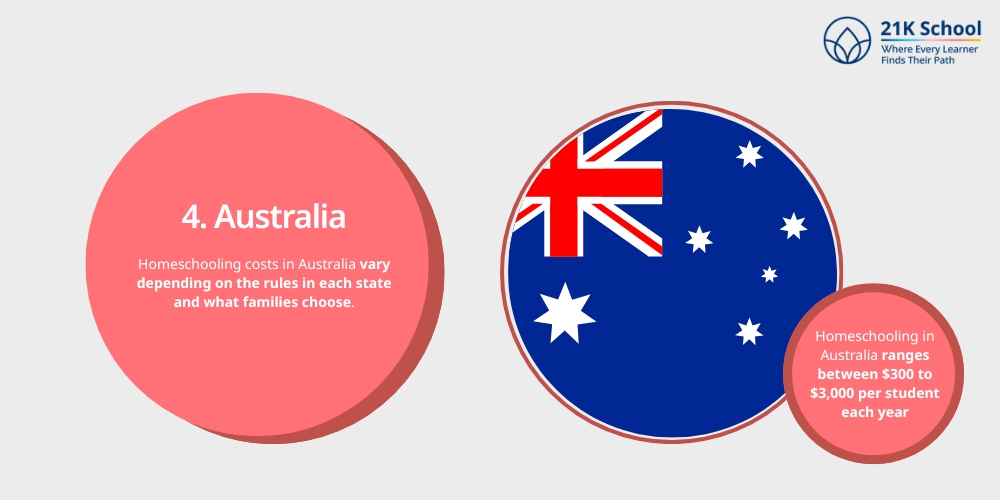
Homeschooling costs in Australia vary depending on the rules in each state and what families choose.
- Curriculum and supplies: $150–$1,000 per year
- The cost for online learning is $10–$600 per year.
- Field trips and extracurricular activities: $150–$1500 a year
- Annual costs for tutoring are $0 to $2,000.
Refer: https://www.diyandallthingsmama.com/how-much-does-homeschooling-cost/
Because of homeschooling’s rise, many families now use tutoring services.
5. New Zealand

Having supporting laws about homeschooling results from it being a common option in New Zealand. If homeschooling is what you choose:
- For Self Curriculum like Apologia or Charlotte Mason, and materials are in the range of $60 to $80 per subject, per year.
- You can expect to pay $200–$300 yearly for online resources and subscriptions.
- Field trips and extracurriculars can cost between $200 and $500 a year.
- Tutoring rates: about $25–$120 per hour
Refer: https://clueylearning.co.nz/en_nz/homeschooling-new-zealand/how-much-does-homeschooling-cost
It is necessary to state that homeschooling is really appreciated and allowed in New Zealand.
What Is the Cost of Homeschooling in India?
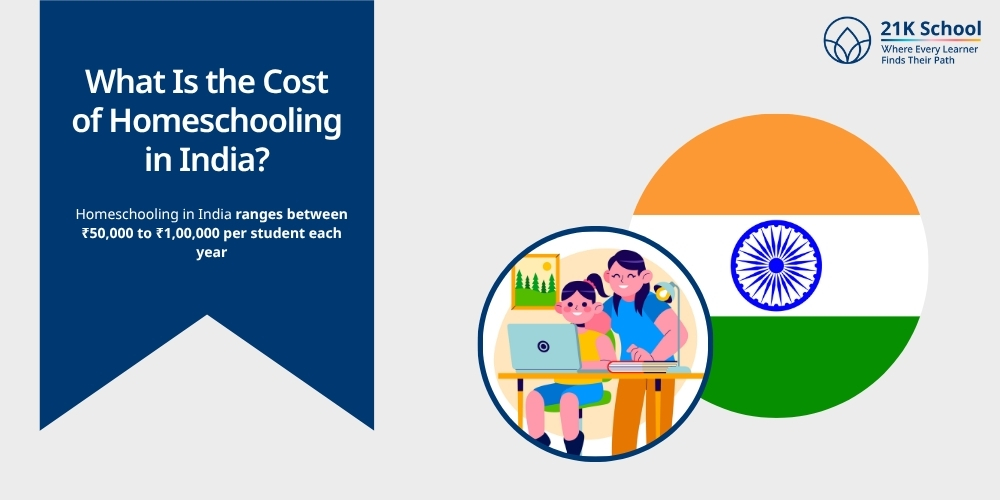
The expenses for homeschooling in India depend on the curriculum selected, learning materials used and the method of instruction. A year of homeschooling a child typically costs between ₹50,000 and ₹1,00,000. Examples of expenses are:
- Annual costs for tuition range from ₹45,000 to ₹54,000.
- Allocation for learning Support: ₹2,000-₹2,500 per year.
- Assessment Charges costs around ₹1,750 per year.
- Co-curricular and Extracurricular Activities: ₹750 every year.
- The cost for textbooks falls between ₹3000 yearly.
These costs change with the choices families decide on and how much education is given. You can surely find homeschooling on a budget: cost saving tips.
Is Homeschooling Accepted by Indian Law?
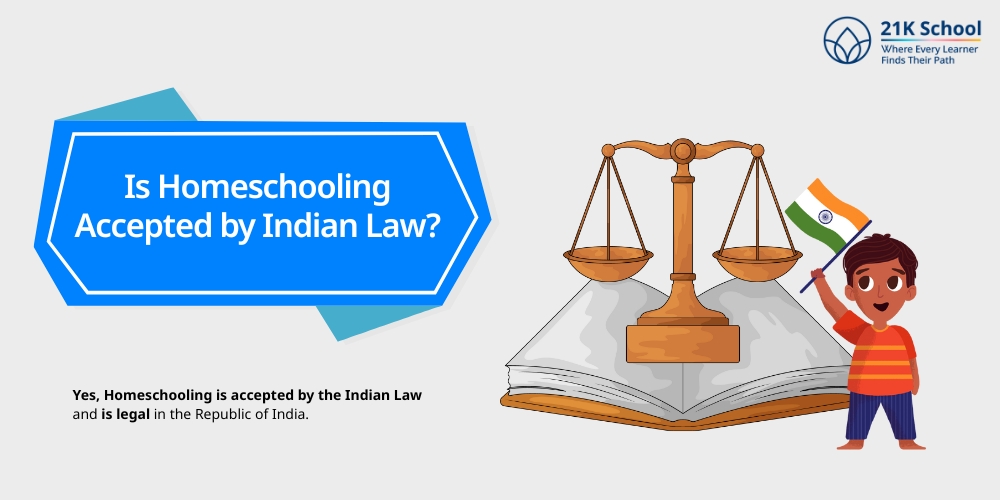
Homeschooling does not have any legal recognition or regulation in India. Generally, it is approved and many parents opt to homeschool their kids.
Many parents choose to have their children take examinations by NIOS or opt for IGCSE since these are recognized globally. They give official confirmation of a student’s education which is needed for further studies and job opportunities.
Read more and find out is homeschooling legal in India?
Homeschooling Programs
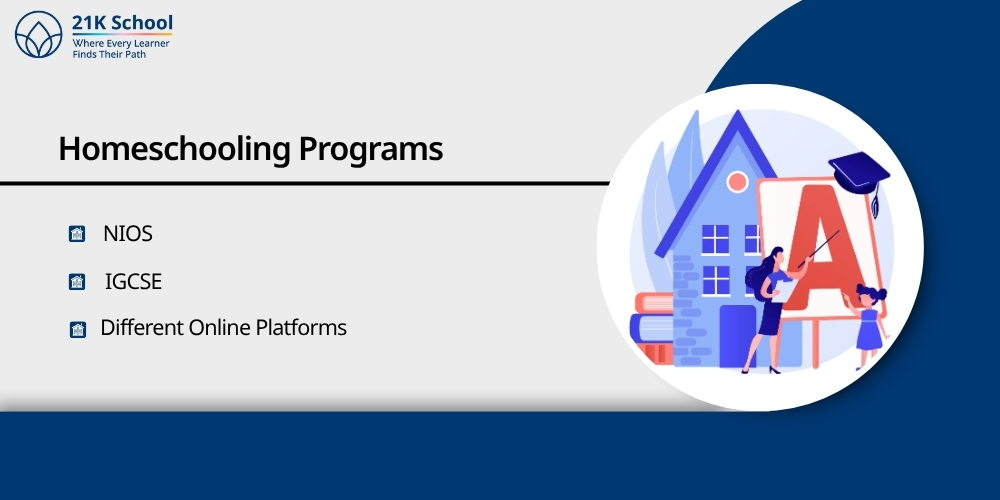
Many organizations in India provide structured homeschooling curriculum and assistance for families:
- NIOS allows flexible studying and is approved by the government of India. The institute gives courses for secondary and senior levels, enabling students to take examinations and get certification.
- The curriculum for the International General Certificate of Secondary Education (IGCSE) is designed by Cambridge Assessment International Education and is accepted by schools worldwide.
- On the Internet, there are many online platforms that give Indian students access to homeschooling, including lessons, evaluations and awards.
How to Pick a Homeschool Program?
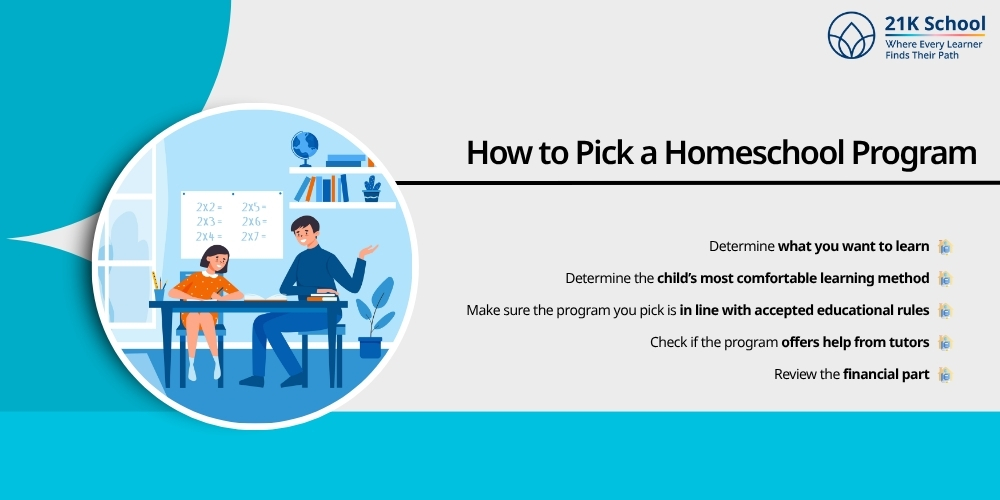
Choosing the suitable homeschooling program requires thinking about various aspects.
- Determine what you want to learn in the future such as preparing for college or getting specific skills.
- Determine the child’s most comfortable learning method, organized lessons or spontaneous processes.
- Make sure the program you pick is in line with accepted educational rules and gives the chance to earn certificates.
- Check if the program offers help from tutors, learning materials and groups within the community.
- Be sure to review the financial part of it and select a program that won’t go beyond your budget.
Homeschooling Methods
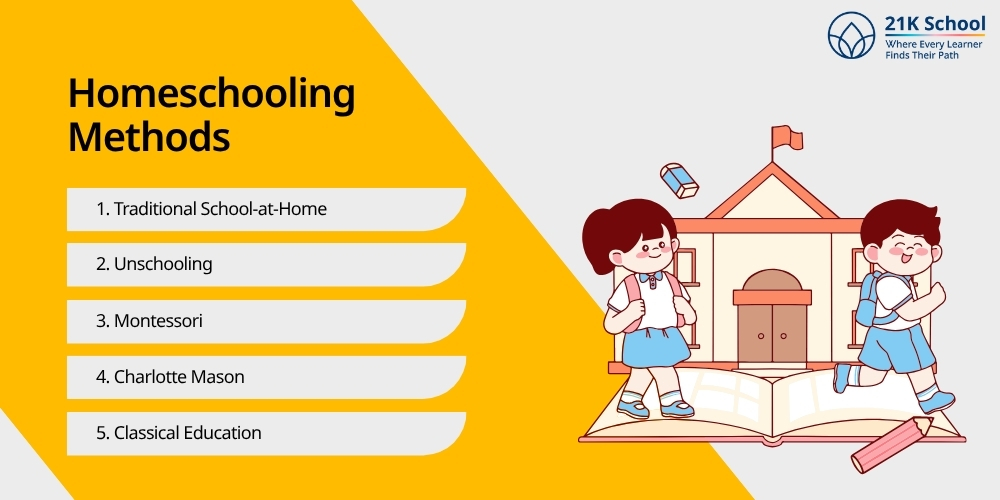
Several methods of homeschooling work well with different learning and teaching ideas:
- Traditional School-at-Home puts emphasis on following a school schedule and set lessons.
- Unschooling means you leave the child to decide what and how they learn, so they are in charge of their learning speed.
- Montessori highlights learning by doing and choosing what to do which supports being independent and enjoying education.
- Charlotte Mason teaches children primarily using literature, outdoors activities and values important character traits.
- Classical Education works through several courses, first teaching grammar, then logic and then rhetoric, helping students develop their reasoning skills.
Every approach can be personalized to fit what the child and family want to achieve in their education. These methods should ensure at last if online homeschooling is really effective in India or not.
How to Enroll in Homeschool?
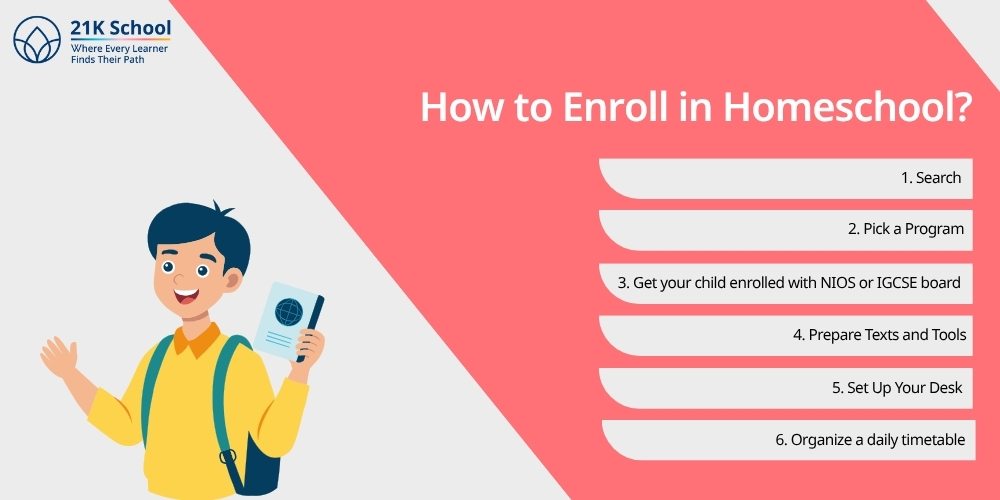
The process to join homeschooling in India requires a series of actions:
- Search for homeschooling options that will fit your goals and fit into your budget.
- Pick a Program: Find a curriculum designed for your child’s way of learning and that can result in recognized certificates.
- Get your child enrolled with NIOS or IGCSE board to guarantee their qualifications are recognized officially.
- Prepare Texts and Tools: Get all the necessary books, online subscriptions and tools you may require.
- Set Up Your Desk: Arrange your study materials on your desk, in a way that ensures you will not be distracted.
- Organize a daily timetable that allows you to separate lessons, take breaks and do extracurriculars.
Online Homeschooling Options in India

After COVID-19, more Indian families have tried homeschooling, as its benefits in online education were brought to attention. There are now Indian platforms that specifically help with this, providing organized courses and flexible timing options:
1. 21K School
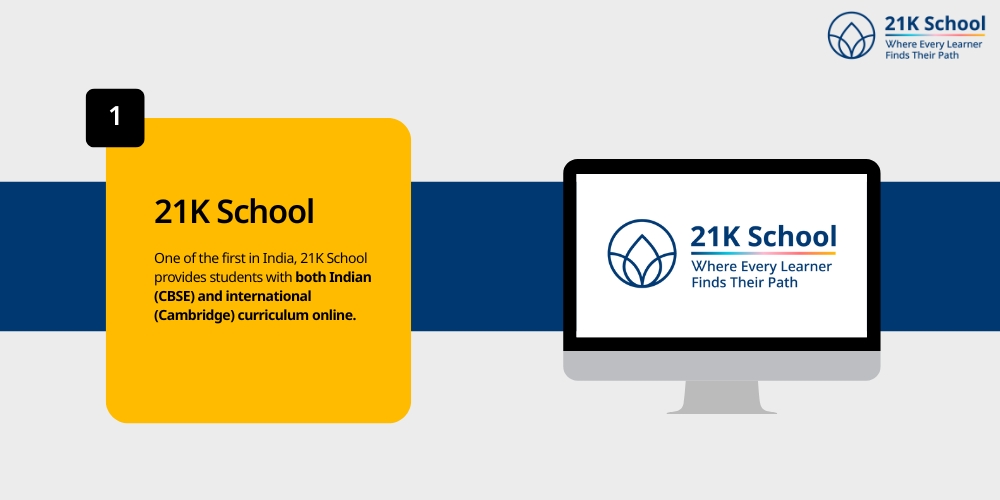
One of the first in India, 21K School provides students with both Indian (CBSE) and international (Cambridge) curriculum online. Digital classes are held in real time, homework is done online and students are given planned assessment tasks.
Learning is made unique for each student through counseling and the availability of many elective subjects.
- Best Suited: Families will choose this if they prefer a school-like setup and standardized curricula.
- Important Features: Live interaction, both CBSE and Cambridge options and often scheduled assessments.
2. Class of One
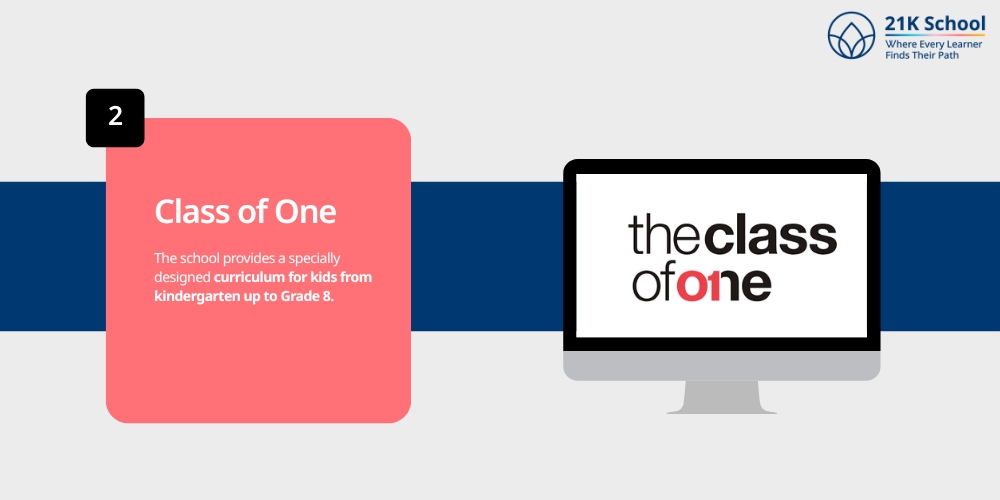
The school provides a specially designed curriculum for kids from kindergarten up to Grade 8. Options for learning plans offered are 1-on-1 instruction or small group classes for parents to choose.
The site is built to allow kids to learn whenever and however they like.
- Ideal For: People who like customized care and can work around different teaching schedules.
- Key Features: Interactive classes, personal learning plans and concentration on the total well-being of the person.
3. Dreamtime Learning School
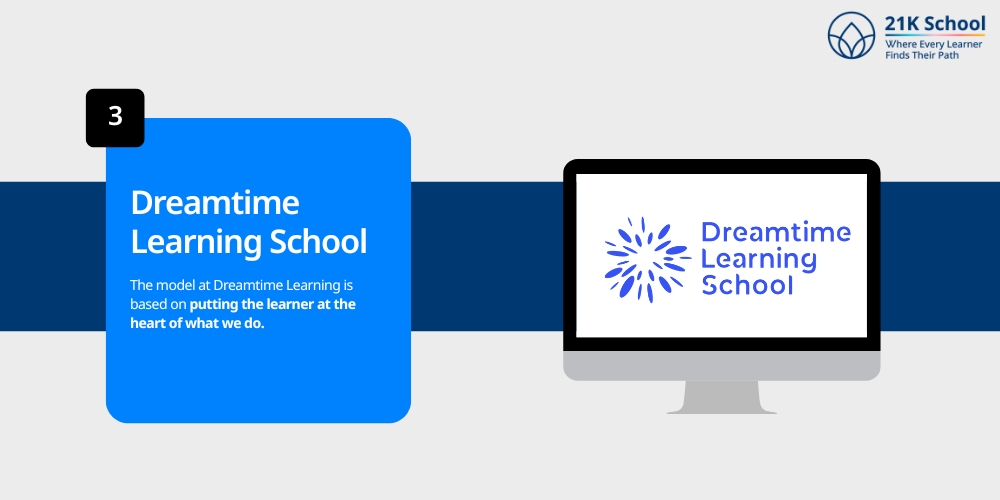
The model at Dreamtime Learning is based on putting the learner at the heart of what we do. It integrates online classes with activities done outside to equip children with important life skills, creativity and critical thinking.
- Safer for: Choosing experimental ways and different approaches to education.
- Important Elements: Students learn from doing, the curriculum is designed for flexibility and they build and use a digital portfolio.
4. iSchooling
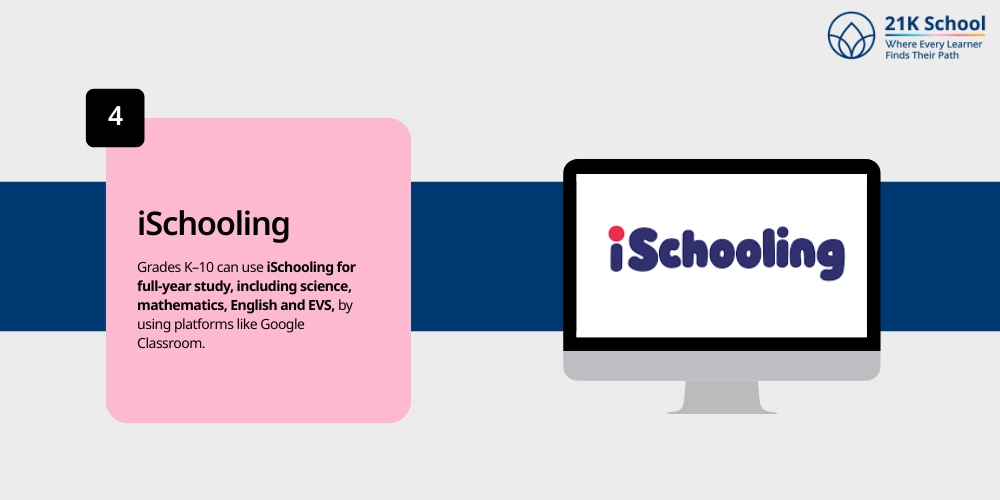
Grades K–10 can use iSchooling for full-year study, including science, mathematics, English and EVS, by using platforms like Google Classroom. It helps with CBSE and ICSE-related education.
- Ideal For: Families that want to use the Indian schooling system.
- Advantages: There are complete course materials, video lessons and tools for assessment.
Besides the challenges faced by parents in choosing the right homeschool, explore how an online school can support homeschooling parents
Online Homeschooling Opportunities Worldwide
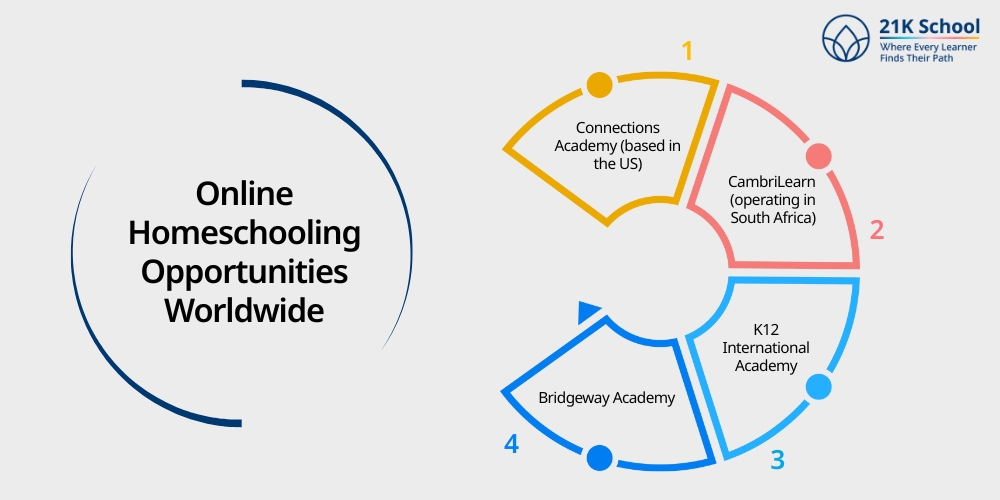
Many international online homeschooling platforms offer lesson plans that match international educational boards. Some students go all the way with virtual learning and others benefit from using additional electronic options.
1. Connections Academy (based in the US)
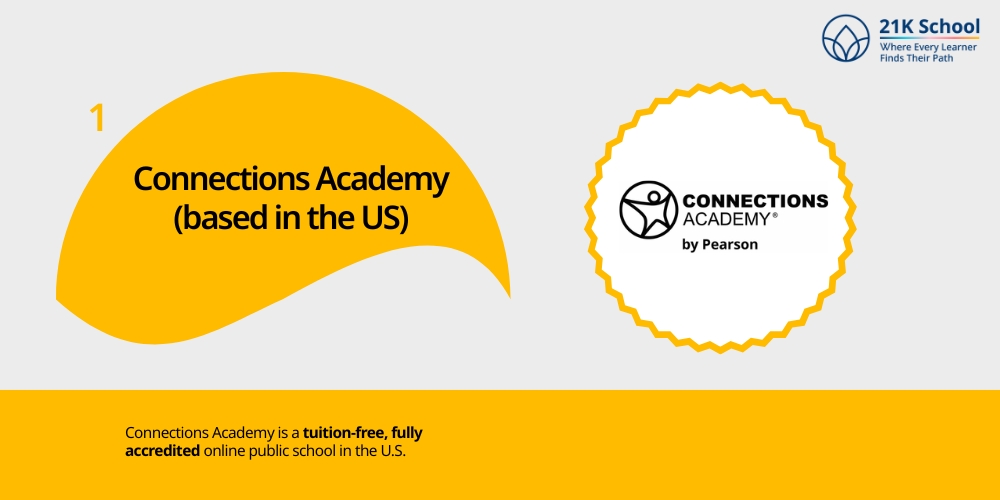
Connections Academy is a tuition-free, fully accredited online public school in the U.S. It offers certified teachers for all grades K–12.
Live online classes, group talks and an organized school calendar are part of the program for students.
- Best Suited: For anyone in the U.S. who wants to study accredited courses for free.
- Important aspects: Online classes, a personal timeline and educational support.
2. CambriLearn (operating in South Africa)
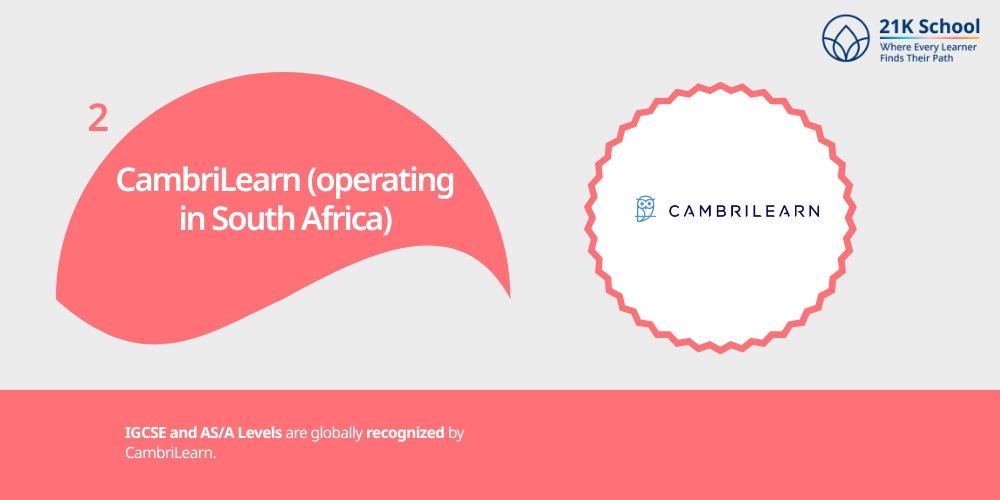
IGCSE and AS/A Levels are globally recognized by CambriLearn. And students can use the program if they are full-time or just want to add to their schoolwork.
With this, you can learn at your own pace, but also get support and attend live sessions with your teacher.
- Suitable for: International students getting ready to take Cambridge exams.
- Distinctive Attributes: Schools follow curricula from different countries, tutoring is done live and you can set your own schedule.
3. K12 International Academy
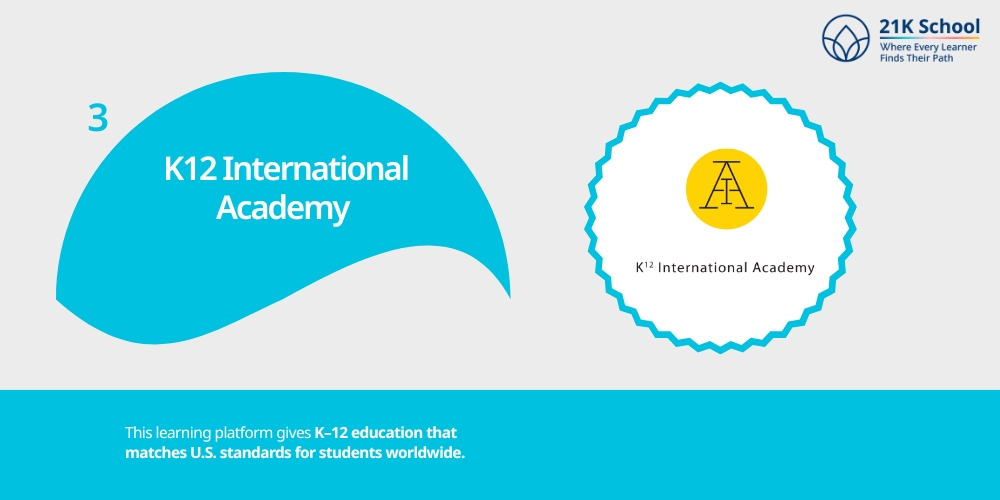
This learning platform gives K–12 education that matches U.S. standards for students worldwide. Using qualified teachers and multimedia activities, it caters to both graduates who study full time and those who study part time.
- Best Suited For: People who want to study a U.S. curriculum while learning about global issues.
- Distinctive Features: Live and recorded instruction, comments from instructors and preparation for university is available.
4. Bridgeway Academy
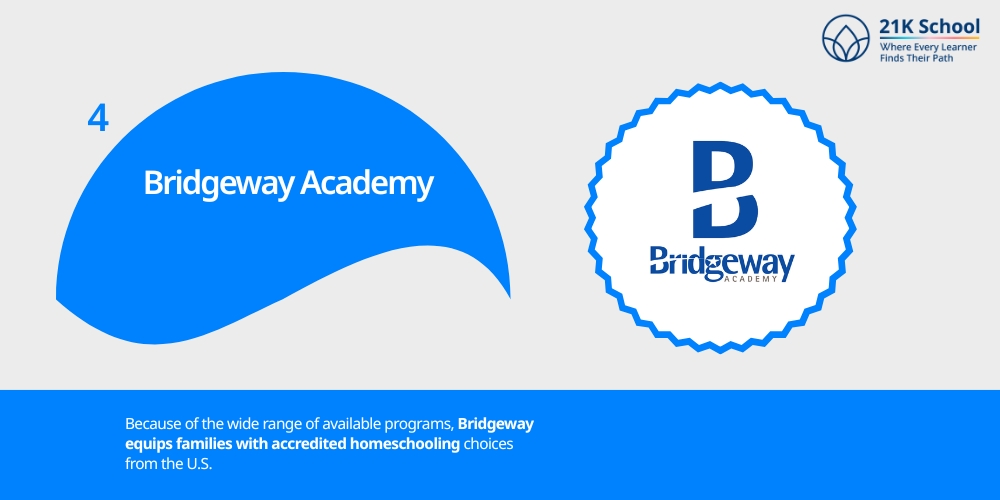
Because of the wide range of available programs, Bridgeway equips families with accredited homeschooling choices from the U.S. Learners from more than 60 countries can study at TopSchool which gives strong support to teachers.
- Suitable For: School districts looking to develop their own curriculum and get accredited.
- Main Characteristics: Meetings with advisors, making individual learning plans and accreditation.
Advantages of Homeschooling
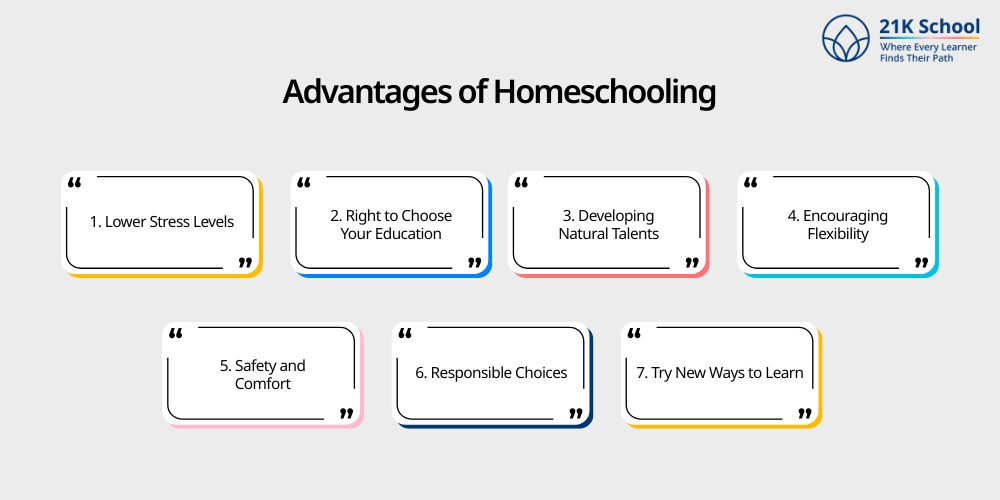
If traditional schooling doesn’t provide the right support, homeschooling gives parents and students many reasons to choose it. Following are the benefits of homeschooling your child:
1. Lower Stress Levels
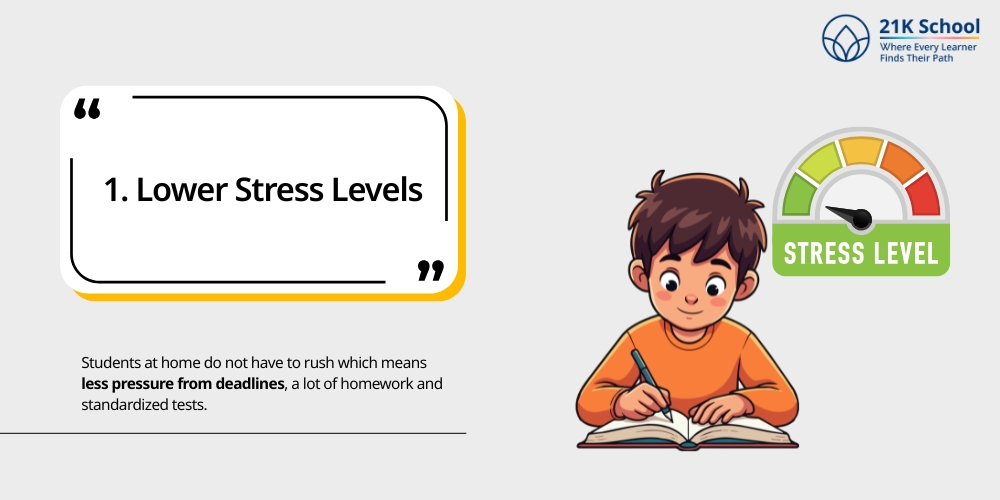
Students at home do not have to rush which means less pressure from deadlines, a lot of homework and standardized tests. When there is no pressure to compete or hit marks, students have the opportunity to really grasp a concept.
The environment of homeschooling is mostly free from general causes of stress in students.
2. Right to Choose Your Education

Carrying out educational values and learning goals is possible for students and parents by coming up with their own curriculum. Special attention may be given to arts, entrepreneurship, STEM or vocational training which are sometimes left out of standard schooling.
3. Developing Natural Talents
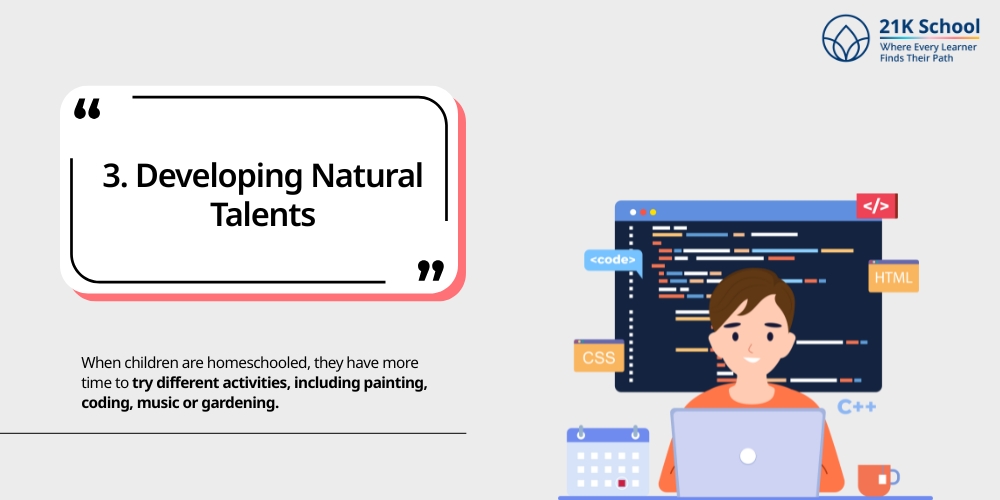
When children are homeschooled, they have more time to try different activities, including painting, coding, music or gardening. Whereas most schools aim for all students to achieve the same, homeschooling works with each child’s strengths and abilities.
4. Encouraging Flexibility
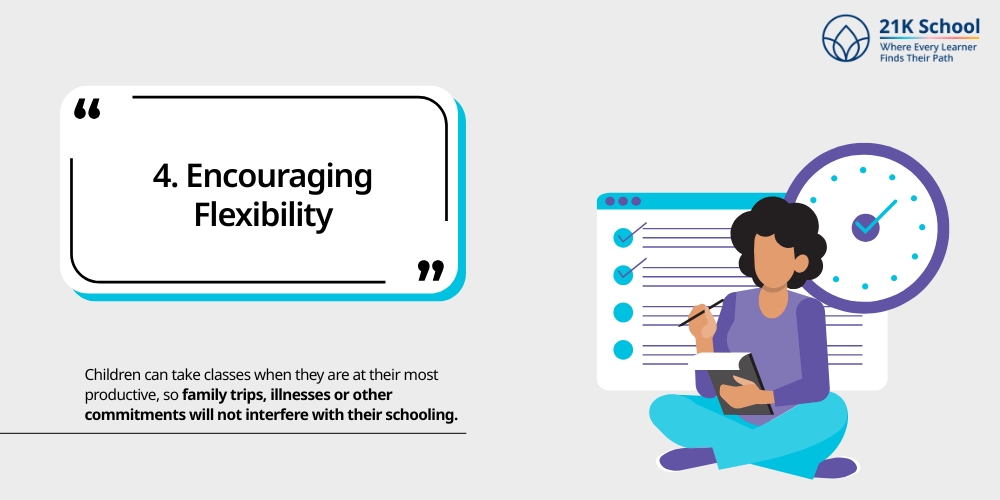
Children can take classes when they are at their most productive, so family trips, illnesses or other commitments will not interfere with their schooling. It allows students to bring what they do in real life into their normal lessons.
5. Safety and Comfort

Being at home removes difficulties such as bullying, dealing with peer pressure and facing dangerous commutes. Because they feel safe in homes, children pay more attention to learning.
6. Responsible Choices
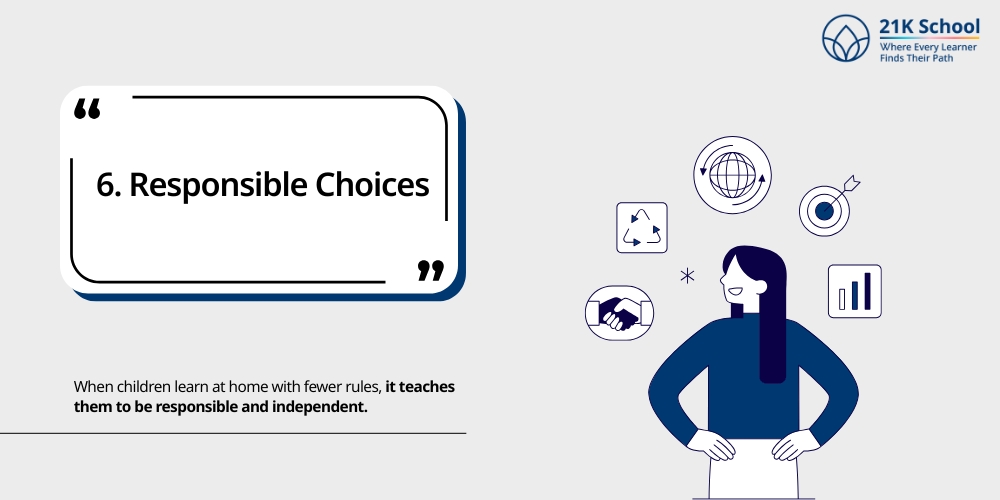
When children learn at home with fewer rules, it teaches them to be responsible and independent. Students should be shown how to create goals, check their achievements and think about their own education.
7. Try New Ways to Learn
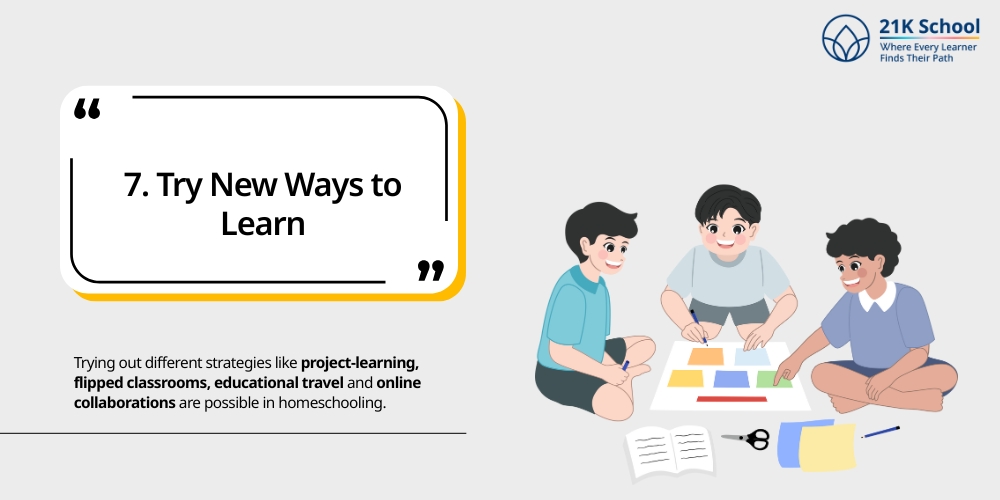
Trying out different strategies like project-learning, flipped classrooms, educational travel and online collaborations are possible in homeschooling. They tend to be superior to memorizing skills alone.
Also refer, Homeschooling Preschoolers: Fun and Educational Activities
Disadvantages of Homeschooling
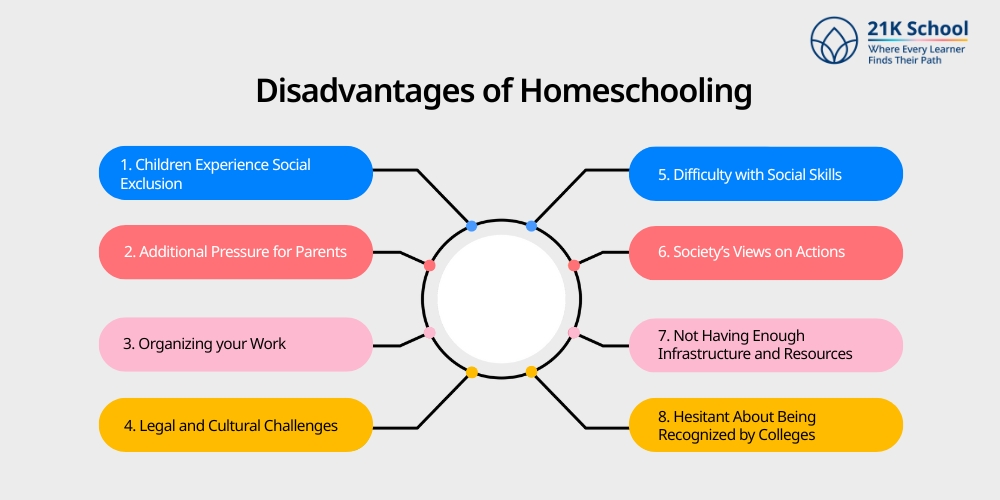
Despite how homeschooling can work well, there are also challenges that families have to handle wisely. The following section continues with these disadvantages of homeschooling, what every parent should consider before enrollment:
1. Children Experience Social Exclusion
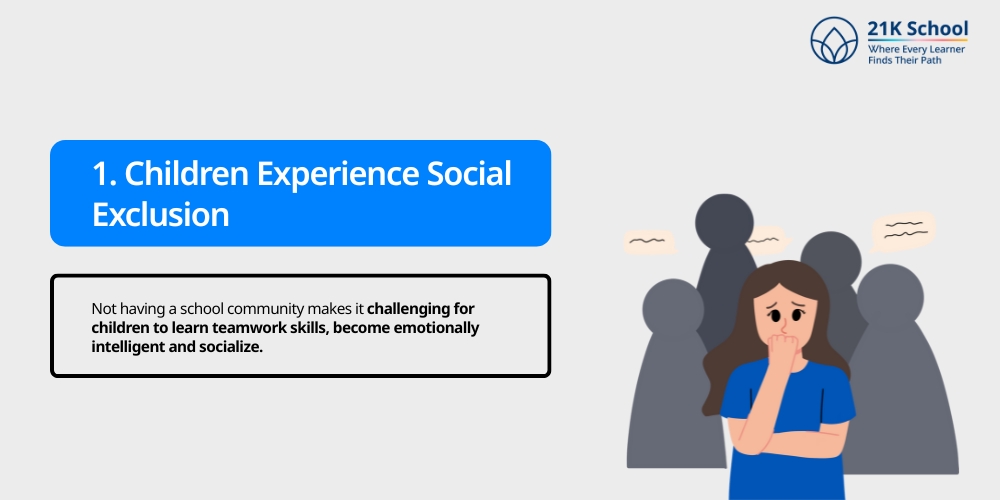
Many people worry about becoming socially isolated. Not having a school community makes it challenging for children to learn teamwork skills, become emotionally intelligent and socialize.
Though actions could be taken to ensure homeschooling and socialization don’t remain foreign and apart from each other.
2. Additional Pressure for Parents
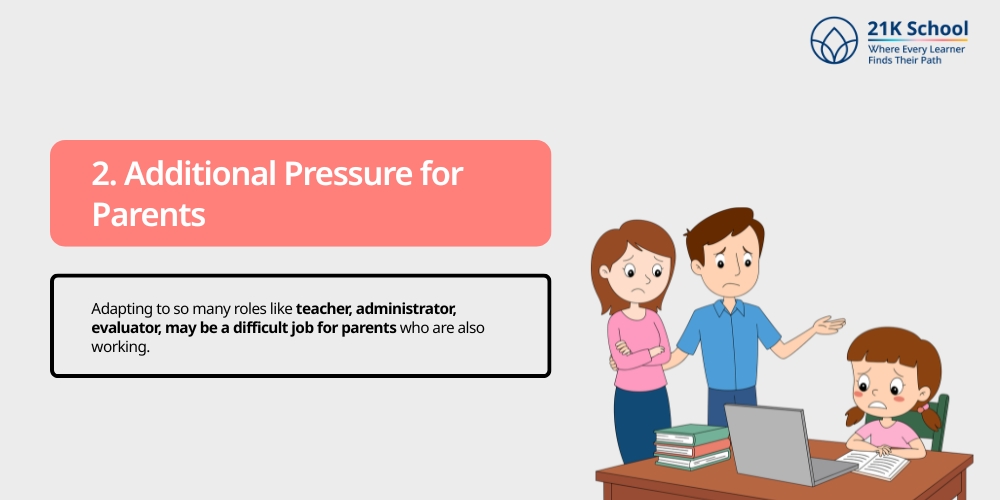
Adapting to so many roles like teacher, administrator, evaluator, may be a difficult job for parents who are also working. Such a role takes time, a lot of patience, thinking out lessons and giving emotional support which can be exhausting.
3. Organizing your Work
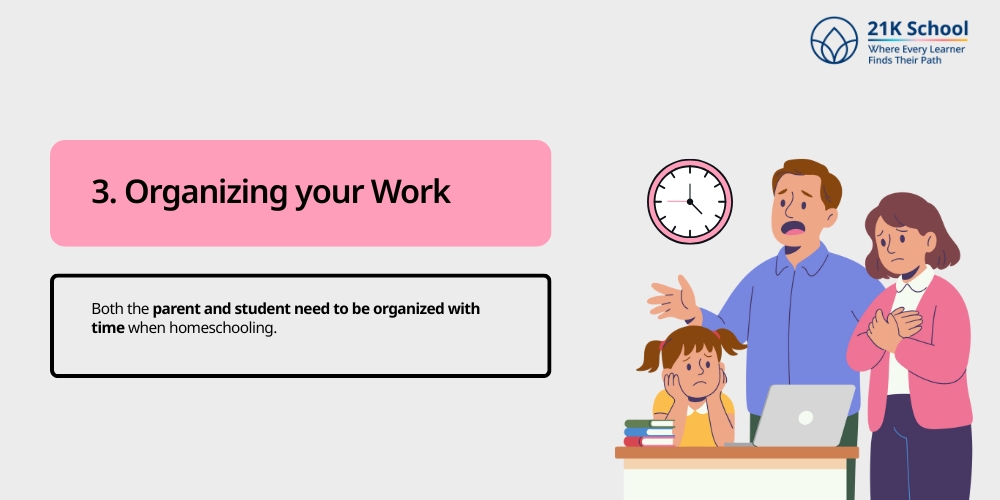
Both the parent and student need to be organized with time when homeschooling. Managing schoolwork, activities outside class, tests and family can be hard if there are no good scheduling tools available.
4. Legal and Cultural Challenges
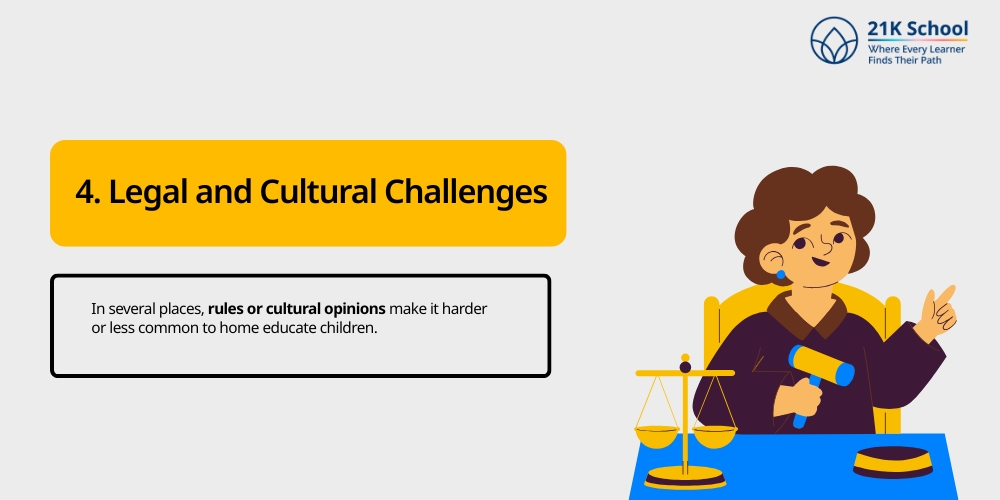
In several places, rules or cultural opinions make it harder or less common to home educate children. As a result, certificates might not be approved, respect may be questioned, and complaints may be received from the community.
5. Difficulty with Social Skills
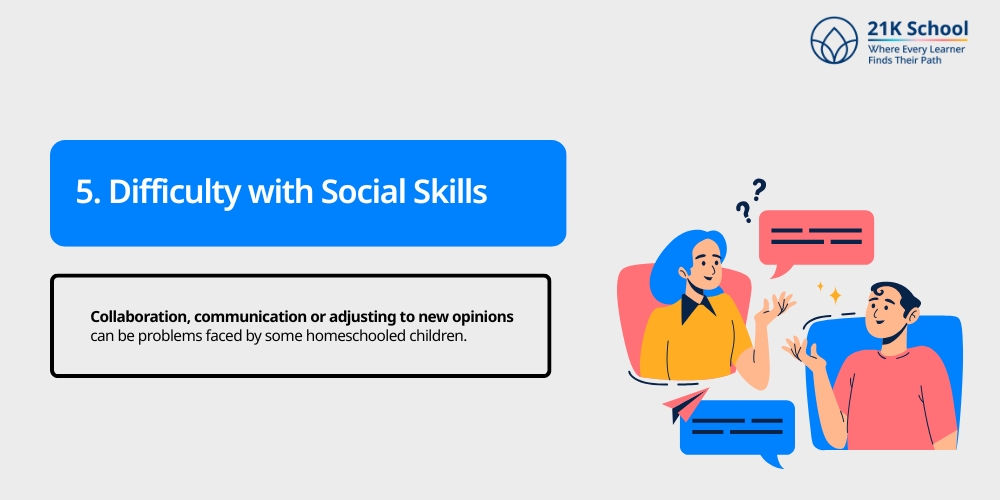
Collaboration, communication or adjusting to new opinions can be problems faced by some homeschooled children. Without parents arranging group activities, social clubs or trips, children may not have the opportunity to improve their social skills.
6. Society’s Views on Actions
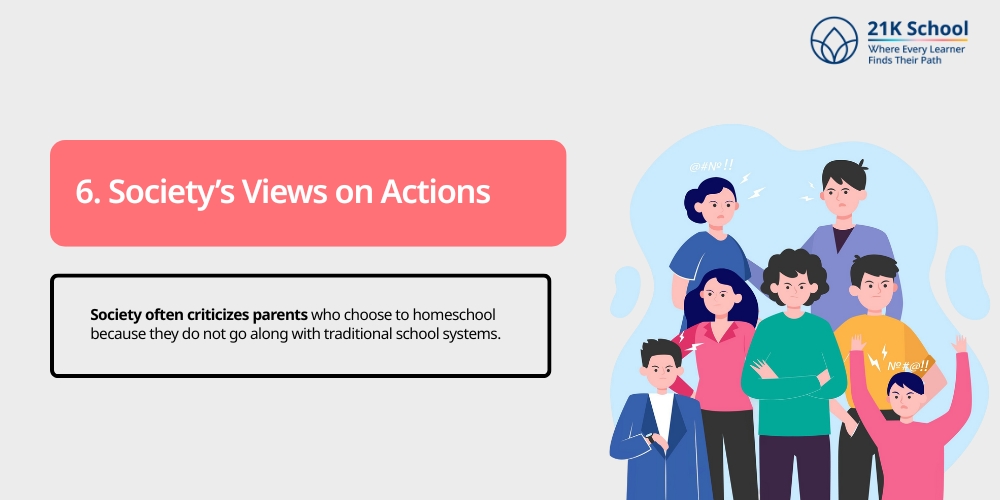
Society often criticizes parents who choose to homeschool because they do not go along with traditional school systems. Family, neighbors or the community might doubt whether homeschooling works well which can lead to second thoughts or more stress.
7. Not Having Enough Infrastructure and Resources
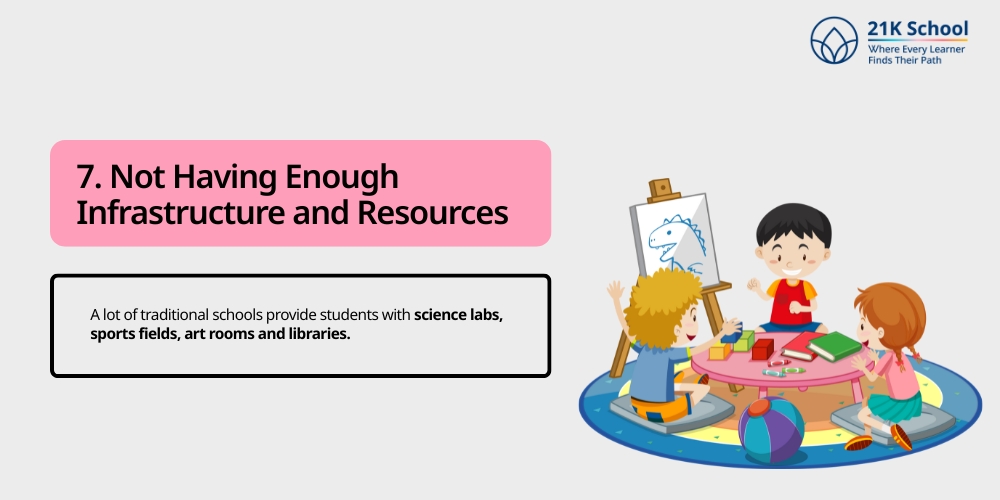
A lot of traditional schools provide students with science labs, sports fields, art rooms and libraries. Creating these learning opportunities in the home is difficult for homeschoolers in rural or otherwise limited-resource places.
8. Hesitant About Being Recognized by Colleges
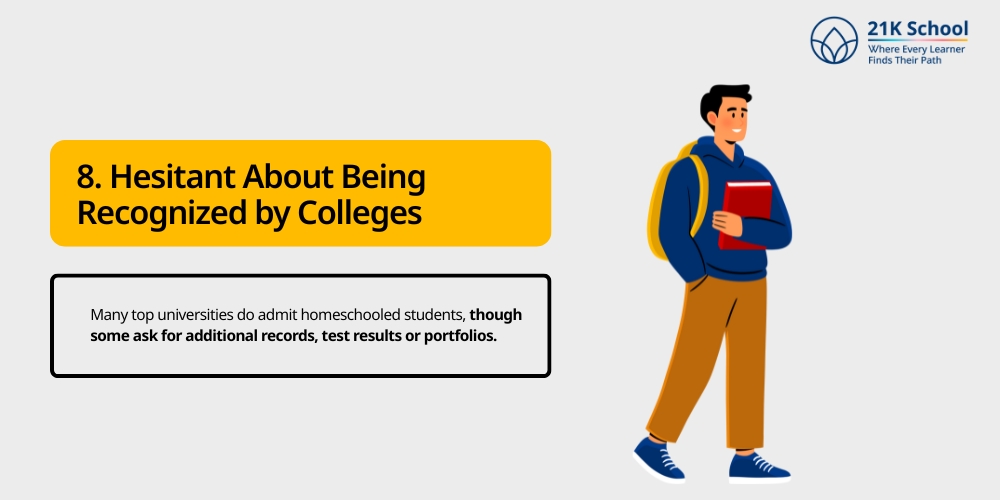
Many top universities do admit homeschooled students, though some ask for additional records, test results or portfolios. In India, universities often look at homeschooling with doubt because of unclear regulations.
How to Train your Homeschooled Child?
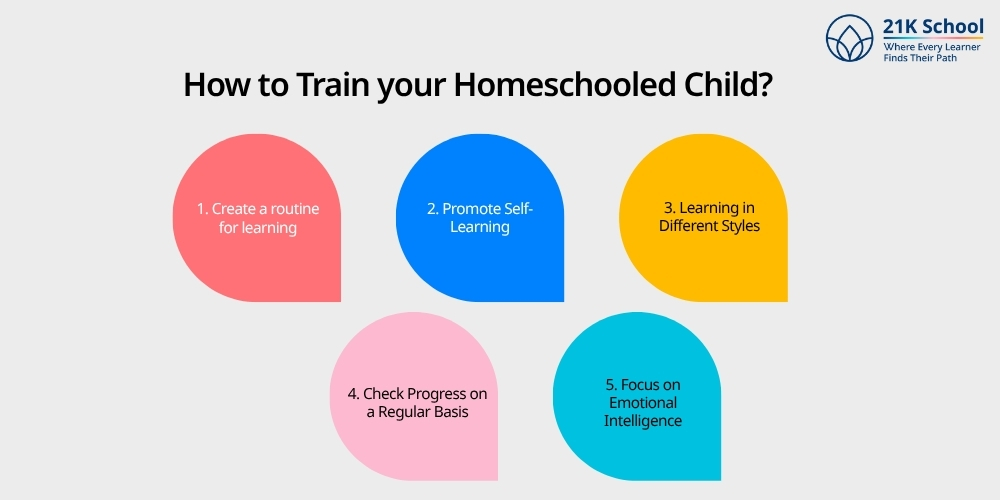
You should teach self-discipline, curiosity, critical thinking and independent learning as much as academics in homeschooling. Since the learning process is more customized and flexible, your role as a mentor becomes very important.
1. Create a routine for learning

Try to divide your day evenly, giving space for studying, exercise, short breaks and your interests. It helps children manage their time well and encourages strong daily habits for studying.
Go through these tips for creating a homeschooling schedule for your child, and get them the best of education.
2. Promote Self-Learning
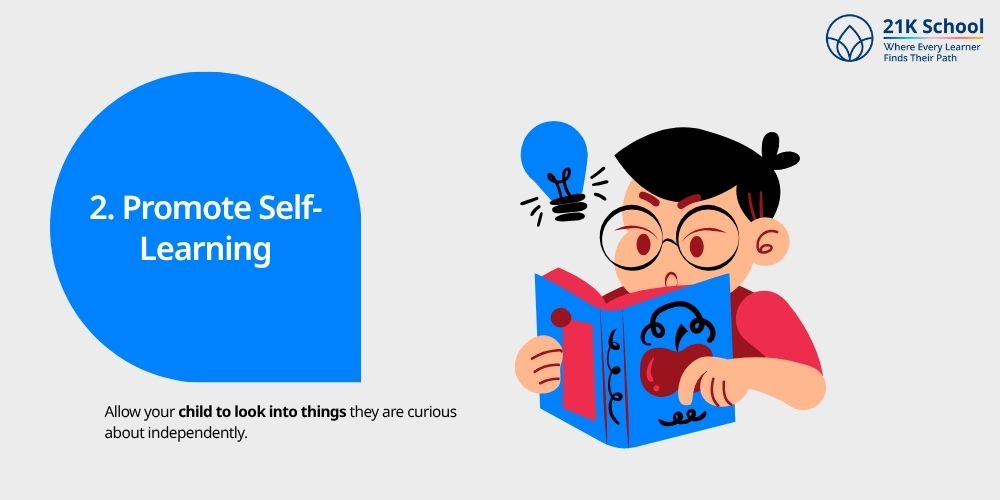
Allow your child to look into things they are curious about independently. Teach them ways to find out information from books, online and through documentaries.
If children practice self-learning, they get curious and carry on learning for a lifetime.
3. Learning in Different Styles
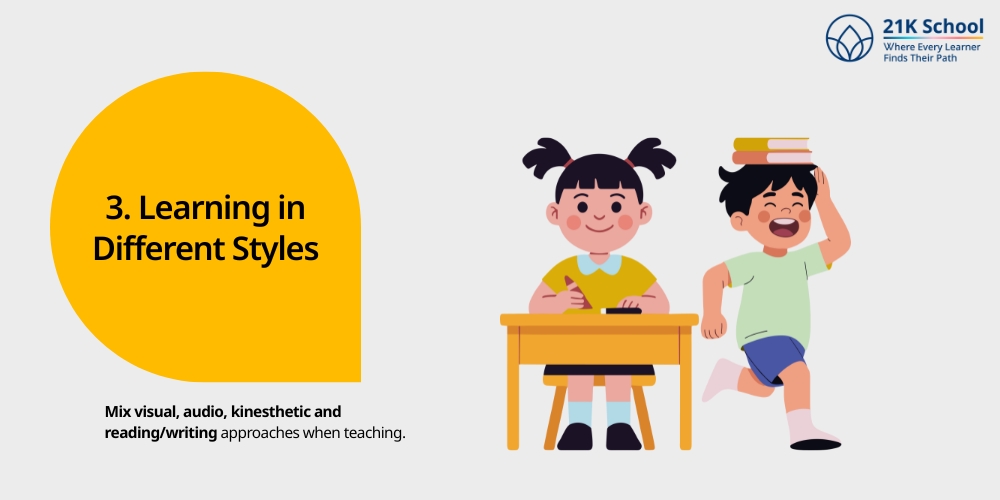
Mix visual, audio, kinesthetic and reading/writing approaches when teaching. Add real-life cases, online games, documentary videos and craft projects to improve the excitement and interest in learning.
4. Check Progress on a Regular Basis
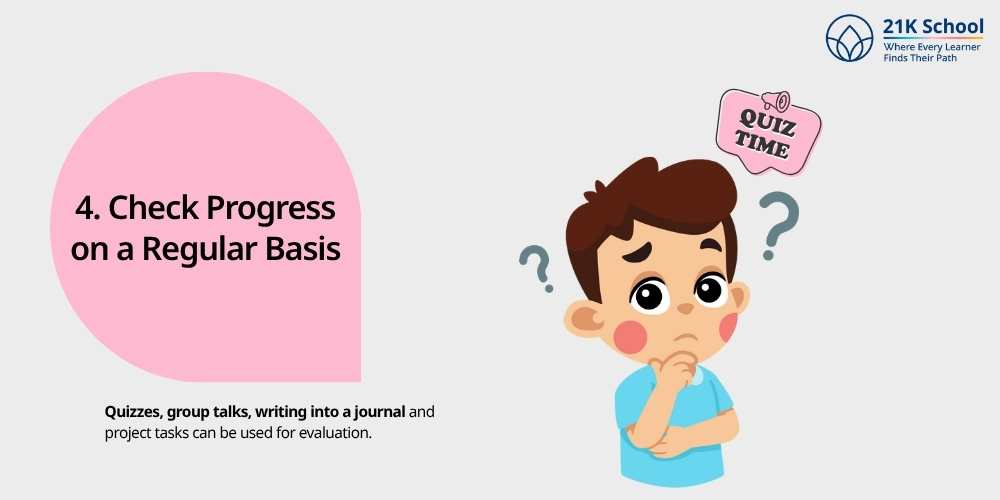
Checking in periodically will reveal your child’s skills and reflect the areas they need to focus on. Quizzes, group talks, writing into a journal and project tasks can be used for evaluation.
5. Focus on Emotional Intelligence
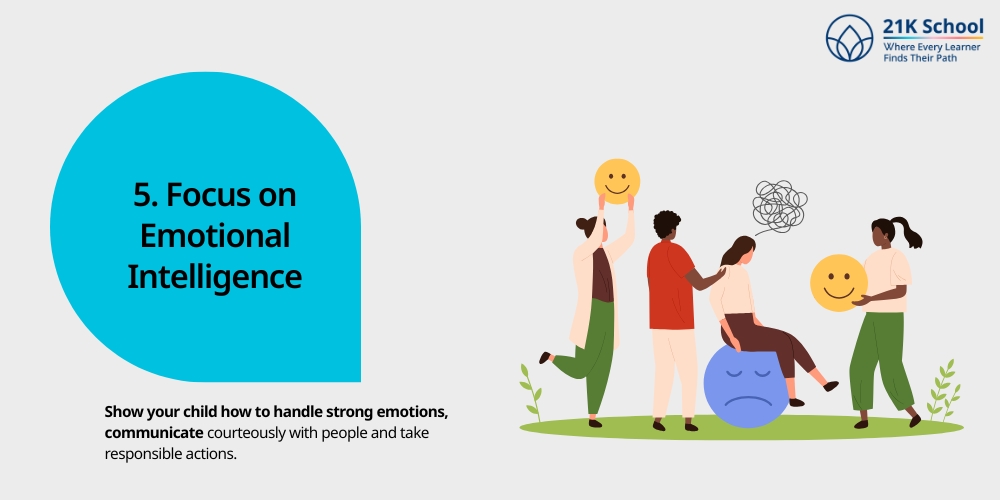
Show your child how to handle strong emotions, communicate courteously with people and take responsible actions. Using role-play, stories and examples from real life can develop both empathy and confidence.
How to Homeschool Your Kid?
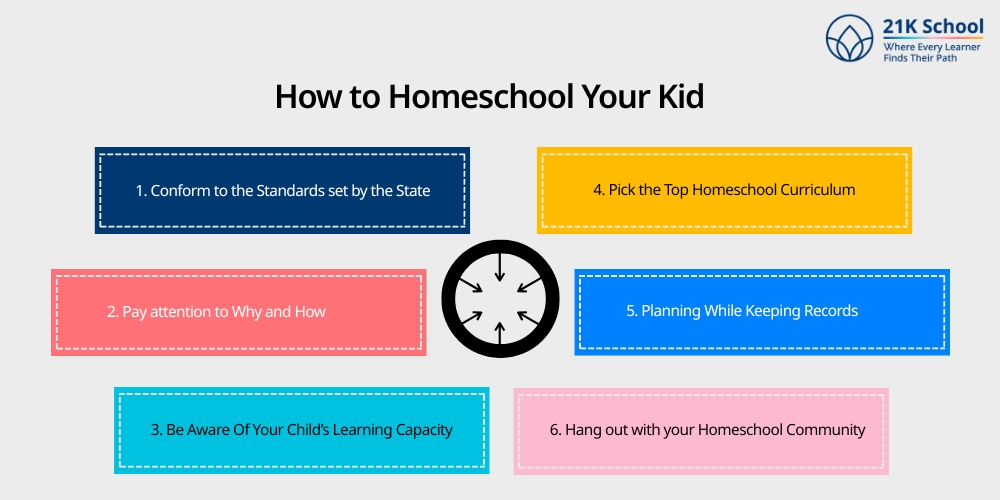
You must use a structured method when you want to give your child a homeschool education. Take the following first-time homeschooling tips to set up a clear, lawful and effective setup.
1. Conform to the Standards set by the State
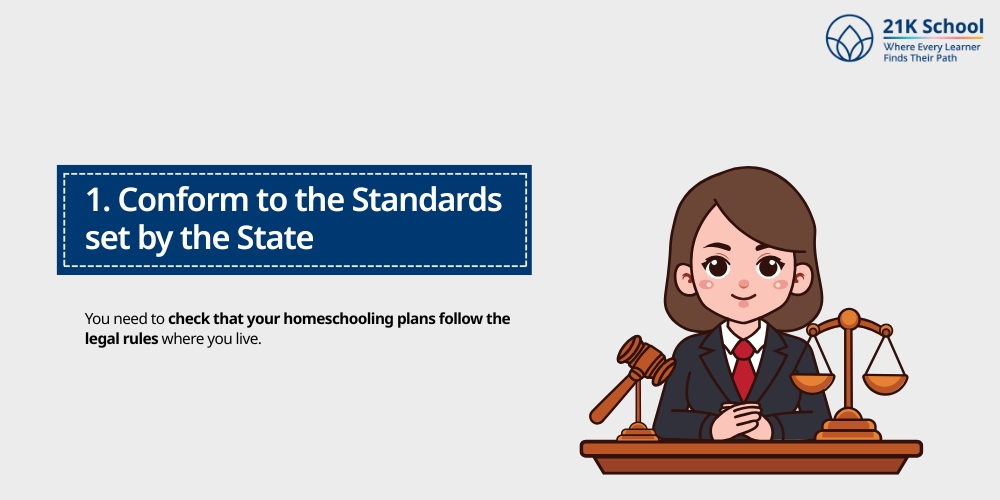
You need to check that your homeschooling plans follow the legal rules where you live. Though there are no nationwide laws on homeschooling in India, it is wise to:
- Use an established examination board like NIOS or IGCSE for getting recognized certification.
- Record and save your child’s achievements as they learn new things.
- Monitor any changes in the policies made by local education officials.
For those not in India, see if where you live requires you to notify the state, do standardized tests or attend an umbrella school.
2. Pay Attention to Why and How
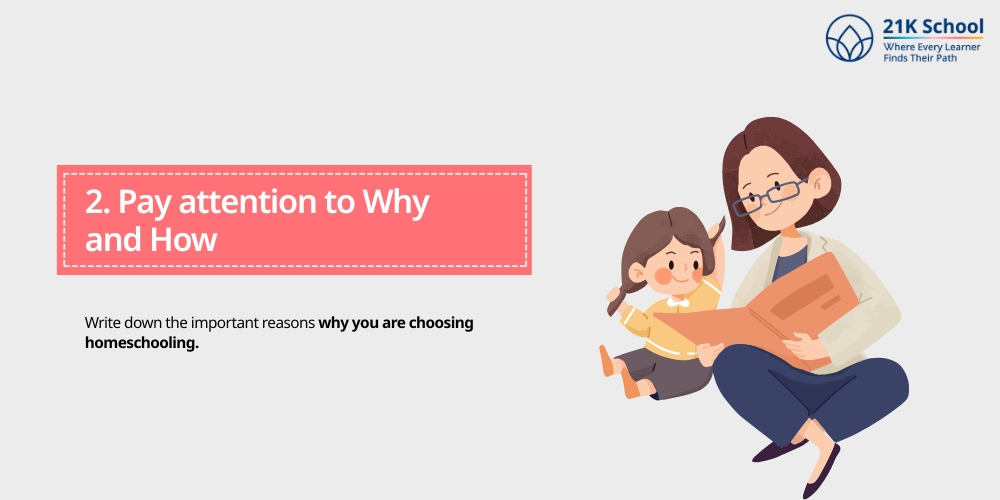
Write down the important reasons why you are choosing homeschooling. Is it because of flexibility, a need to change the traditional way of learning or a wish for more personal learning?
Later on, plan out how you will deliver formal education at home:
- Will the lessons be taught by parents themselves, online or both?
- For how much of the day will learning take place?
- Would you have your child take tutorial lessons in certain subjects?
A vision helps you stay on track and helps you design a way of learning suited to your objectives.
3. Be Aware Of Your Child’s Learning Capacity
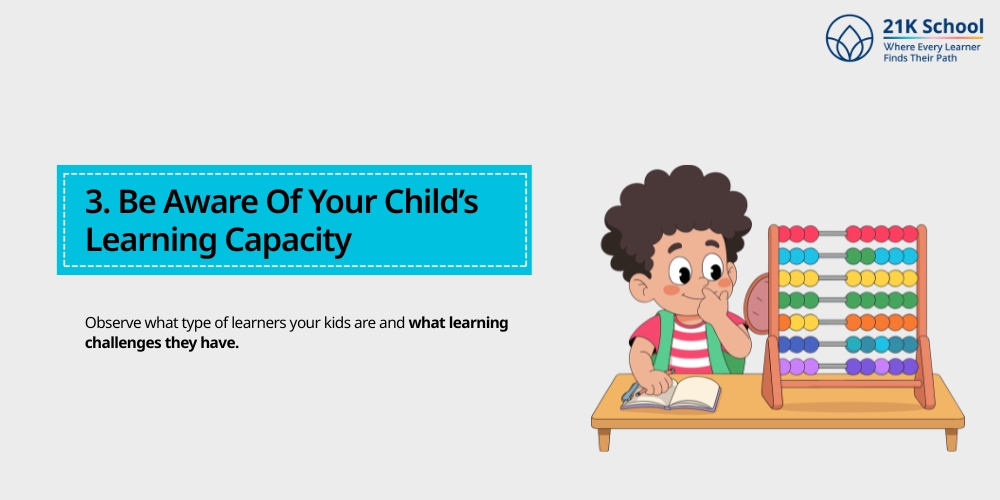
Observe what type of learners your kids are and what learning challenges they have. Some students learn easily with charts or diagrams, but others prefer books, writing or to experiment by themselves.
Ask things such as:
- Are they likely to need to take occasional breaks?
- Is it easier for them to work well in the morning or the evening?
- Do they pick things up fast by themselves or do they require practicing a few times?
This awareness helps you select the best way to teach students for their improved learning.
4. Pick the Top Homeschool Curriculum
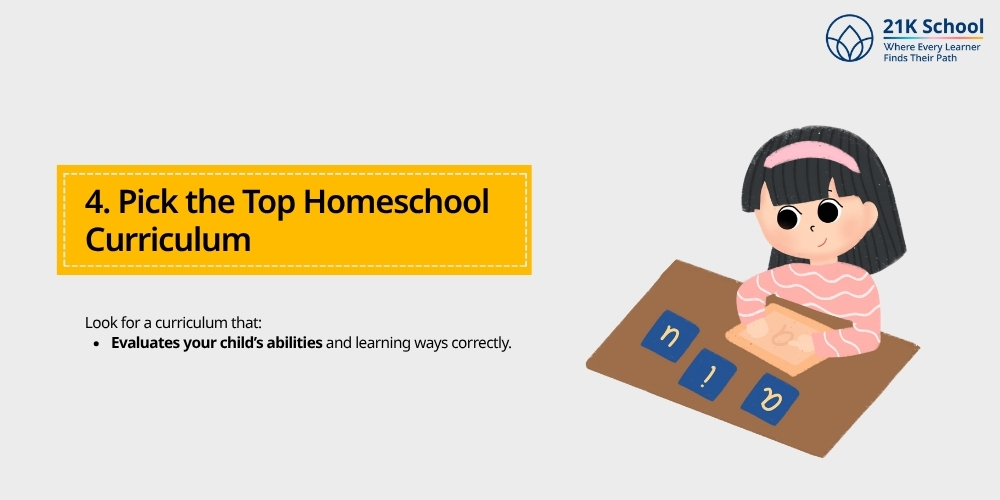
Look for a curriculum that:
- Fits with the way you think about learning and teaching (for example, Montessori, Charlotte Mason, Classical, etc.).
- Evaluates your child’s abilities and learning ways correctly.
- Has available assessments and certifications if required.
You may select any of the following choices:
- Examining boards in India are NIOS and CBSE for online tests.
- Some schools use the Cambridge IGCSE or Pearson Edexcel International Boards.
- Some recommended online courses are 21K School , Khan Academy, Coursera (especially for teens) and BYJU’S.
Make certain the curriculum contains:
- Core academic subjects include Math, Language, Science, Social Studies.
- Emotional skills and knowledge of finances included as life skills.
- Art, music and physical education are all considered creative subjects.
5. Planning While Keeping Records
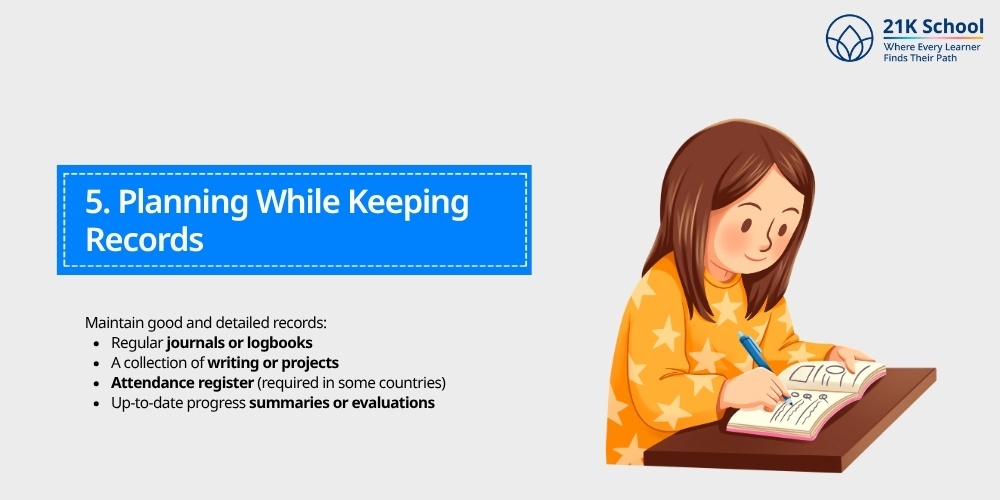
Design a lesson plan for each week or month that covers:
- Topics and subjects to address
- Working on assignments and projects
- Revision and assessment should be done soon.
Maintain good and detailed records:
- Regular journals or logbooks
- A collection of writing or projects
- Attendance register (required in some countries)
- Up-to-date progress summaries or evaluations
Keeping these records will make it simpler both for monitoring your studies and for entering universities.
6. Hang out with your Homeschool Community
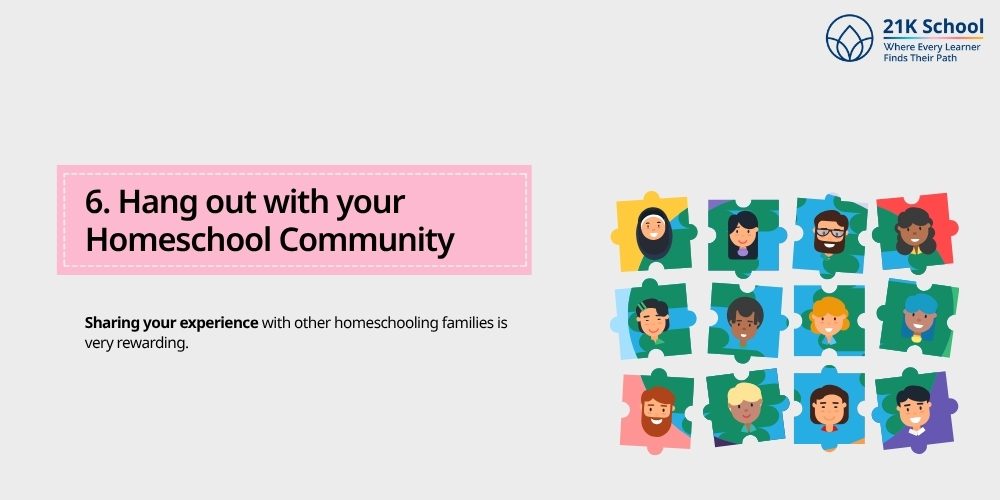
Sharing your experience with other homeschooling families is very rewarding. Community groups give people:
- Using the same resources and developing shared curriculum
- Field trips and science fairs that let students work together
- Social interaction with other children
- Support in both emotional and practical ways for parents
There are communities available:
- With apps like Facebook, WhatsApp or Meetup
- People can choose homeschooling co-ops or local education centers.
- Forums such as Homeschoolers India and The Homeschool Lounge
Being with other families in a community helps prevent isolation and helps your child build important social abilities.
You would be in awe to know people are using ChatGPT for homeschooling: A Professional Guide as an assistance. So, you can too.
In Conclusion
Learning at home gives families the comfort and freedom to schedule classes, modify subjects and explore subjects. So that it interests their children at their own rate.
Globally or in India, students use recognized organisations like NIOS and IGCSE to study and get certified over the internet.
Although online schooling reduces schoolwork, gives students more control and is safer. It also comes with issues such as loneliness, legal gaps and extra duties for parents.
You should choose the best curriculum for your child, learn their learning method, organize records and join a community. People who plan correctly and stick with homeschooling can find it to be an effective and satisfying way to learn.

